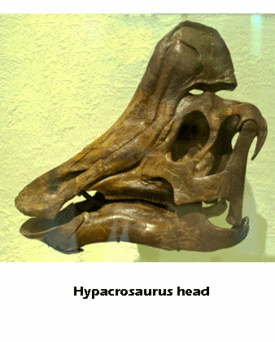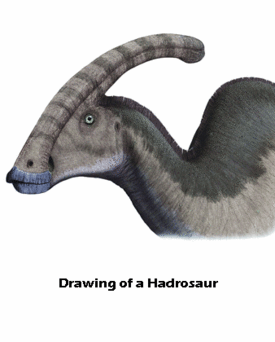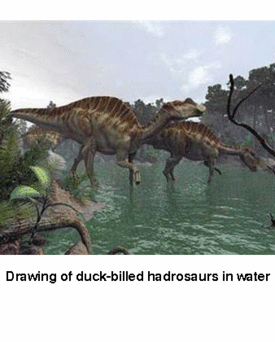Before the 1st Tennesseans
Humans first came to Tennessee a little over 12,000 years ago. These Paleo-Indians were descendants of people who had crossed the land bridge between Asia and North America during the Ice Age.
What was in Tennessee before these first Tennesseans came into the area?
Scientists use fossils to learn about what plants and animals lived in Tennessee before people moved into the area. Fossils are the remains of living things that are preserved in the rock layers of the Earth.
Dinosaurs are often found within the fossil record, but Tennessee has only had one dinosaur find to date. Five hadrosaur bones were discovered in West Tennessee. Read more about the hadrosaur.
The majority of fossils found and studied are tiny parts of smaller animals and plants as well as small animals with hard shells. Common fossils found in Tennessee include trilobites, corals, brachiopods, and crinoids.
About 65 million years ago there was a mass extinction of land and water animals, including all non-avian dinosaurs. Several theories have been used to explain the extinction of the dinosaurs. These include the breakup of Pangaea, a supercontinent that covered a large part of the Earth; a dramatic cooling of the Earth’s climate; changes in oxygen and carbon dioxide levels available in the atmosphere; and a theory regarding the impact of a large comet or asteroid which caused a cover of dirt and ash to block the sun's rays.
Whatever the reason, following the extinction of the dinosaurs, large land animals became plentiful. They included the mastodon, wooly mammoth, giant ground sloths, saber-toothed cats, and camels.
Remains of these early animals have been found in a variety of locations within the Tennessee landscape to include caves, sinkholes, flood plain sediment, and old stream and river beds.
The Gray Fossil Site, near Gray, Tennessee, is the largest and best preserved terrestrial Late Miocene to Early Pliocene (about 4.5 to 7 million years old) site east of the Mississippi River. In addition to the number of different animal species found at the site, the Gray Fossil Site is the world’s largest cache of tapir fossils.
Giant animals disappeared approximately 10,000 years ago. Some scientists believe that this was due to the animals’ inability to adapt to climate changes and/or to the animals’ inability to adapt to the appearance of a new predator, man.
Picture Credits:



 Sponsored by: National Endowment for the Humanities
Sponsored by: National Endowment for the Humanities